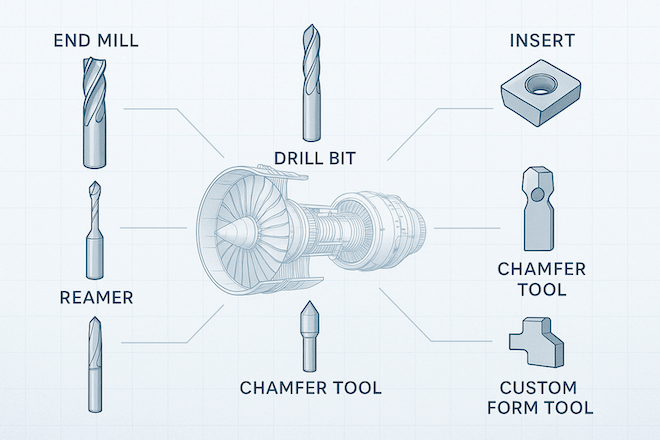소개
항공우주 산업에서는 모든 부품이 중요합니다. 항공기 부품은 엄격한 공차, 높은 강도 요건, 그리고 촉박한 납기일을 충족해야 합니다. 이를 위해 제조업체는 속도, 정확성, 그리고 내구성을 제공하는 첨단 절삭 공구를 사용합니다.
이 공정에서 가장 중요한 도구 중 하나는 텅스텐 카바이드 절삭 공구입니다. 이 글에서는 텅스텐 카바이드가 항공우주 가공에 적합한 소재인 이유, 텅스텐 카바이드가 제공하는 이점, 그리고 기업의 생산 및 성능 목표 달성에 어떻게 도움이 되는지 설명합니다.
항공우주 가공에 고급 도구가 필요한 이유
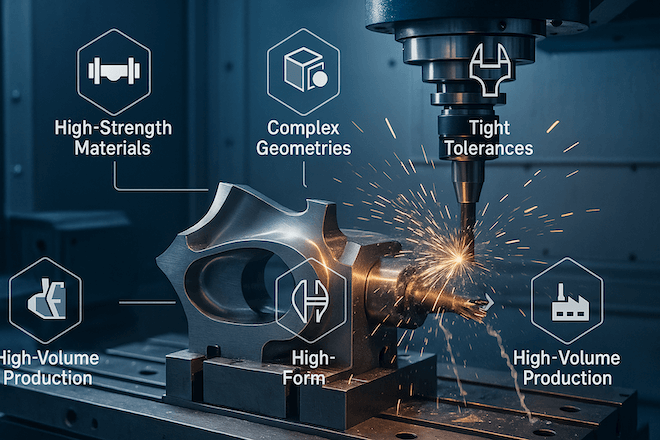
항공우주 부품 가공은 매우 까다롭습니다. 주요 과제는 다음과 같습니다.
티타늄, 인코넬, 고강도 합금 등 가공하기 어려운 소재
터빈 블레이드, 엔진 부품, 기체 브라켓 등 복잡한 형상
마이크론 단위까지 엄격한 허용 오차
정밀성이 요구되는 가볍지만 강력한 부품
촉박한 일정에 따른 대량 생산 또는 장기 생산
이러한 과제로 인해 견고하고 정밀하며 내구성이 뛰어난 절삭 도구를 사용하는 것이 필수적입니다.
텅스텐 카바이드란 무엇인가?
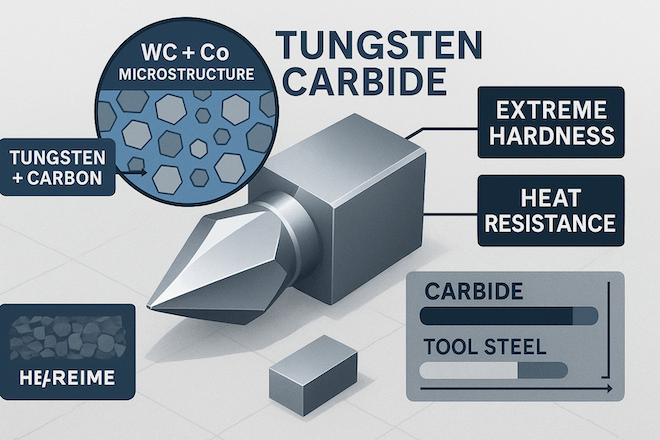
텅스텐 카바이드는 텅스텐(W)과 탄소(C)로 만들어진 화합물입니다.
다이아몬드 다음으로 매우 단단함
매우 내마모성이 뛰어납니다
고속에서도 내열성이 우수합니다.
기존 공구강보다 더 강하고 내구성이 뛰어납니다.
이러한 특성으로 인해 이 제품은 견고한 항공우주 금속을 절단하는 데 적합합니다.
항공우주 분야에서 텅스텐 카바이드 공구의 이점
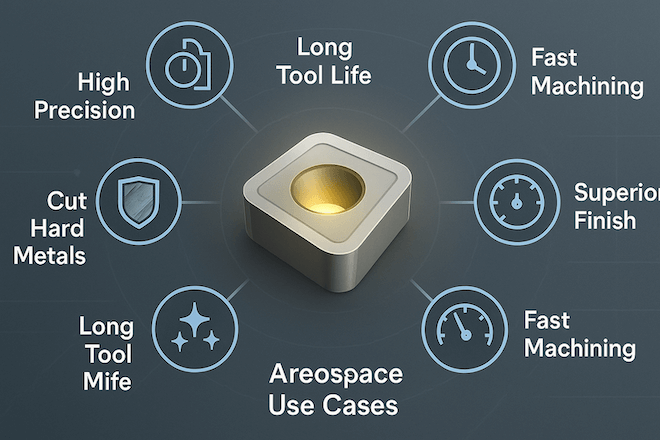
1. 중요 부품에 대한 높은 정밀도
초경 공구는 엄격한 허용 오차와 날카로운 절삭 날을 유지할 수 있으며, 이는 다음과 같은 항공우주 부품에 필수적입니다.
터빈 엔진 블레이드
랜딩기어 샤프트
연료 시스템 구성 요소
구조적 브래킷
이러한 부품은 극심한 응력과 온도 변화 속에서도 기능해야 하며, 완벽한 가공이 필요합니다.
2. 긴 공구 수명 = 낮은 비용
초경 공구는 기존 HSS(고속강) 공구보다 훨씬 오래갑니다. 수명이 길다는 것은 다음과 같은 것을 의미합니다.
도구 교체 횟수 감소
다운타임 감소
낮은 유지 보수 비용
도구당 더 많은 부품
이는 특히 대량 생산 시 부품당 총 비용을 줄이는 데 중요한 요소입니다.
3. 항공우주 소재에 대한 우수한 성능
항공우주 가공에는 종종 다음이 포함됩니다.
티타늄 합금
니켈 기반 초합금
탄소 섬유 복합재
내열강
이러한 소재는 절삭하기 어렵습니다. 텅스텐 카바이드 공구는 높은 하중, 열, 마모에도 성능을 유지하여 더욱 매끄러운 마감과 공구 파손 감소를 제공합니다.
4. 더 빠른 가공 = 더 큰 출력
초경 공구는 고속 절삭을 지원하여 제조업체에 다음과 같은 이점을 제공합니다.
사이클 타임을 늘리세요
처리량 향상
촉박한 납품 기한을 맞추세요
더 빠른 절단은 기계 마모와 에너지 소비도 줄여줍니다.
5. 향상된 표면 마감 및 부품 품질
항공우주 부품은 다음을 개선하기 위해 광택 표면이 필요한 경우가 많습니다.
공기역학
맞춤 및 조립
피로 저항성
초경 공구는 더 나은 표면 마감을 제공하여 2차 연마나 재작업의 필요성을 줄여줍니다.
항공우주 사용 사례: 초경 공구 적용 분야
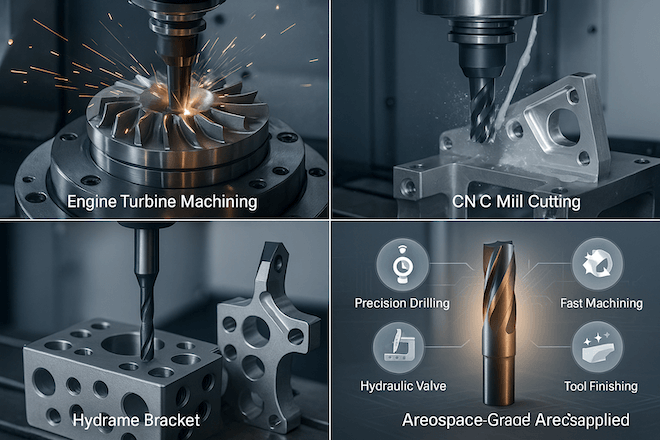
| 적용 분야 | 일반적인 구성 요소 | 사용된 도구 유형 |
|---|---|---|
| 엔진 및 터빈 | 블레이드, 노즐, 디스크 | 초경 엔드밀, 드릴, 리머 |
| 기체 및 구조물 | 브라켓, 스파, 리브 | 초경 인서트, 러핑 밀 |
| 랜딩 기어 | 샤프트, 부싱, 베어링 | 맞춤형 카바이드 공구 |
| 연료 및 유압 시스템 | 하우징, 밸브, 정밀 보어 | 초경 드릴, 리머 |
| 항공전자 및 인테리어 | 패널, 장착 부품 | 마이크로 카바이드 공구 |
항공우주 산업 의사결정권자들이 텅스텐 카바이드를 선택하는 이유
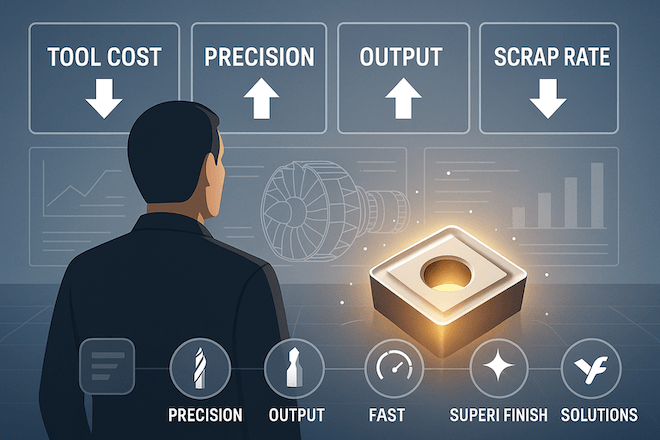
항공우주 제조 분야의 관리자나 엔지니어로서 귀하의 우선순위는 다음과 같습니다.
품질 보증
비용 관리
도구 재고 계획
생산 가동 시간
지속 가능성 목표
텅스텐 카바이드 공구를 사용하면 이 모든 문제를 해결하는 데 도움이 됩니다.
👉 주요 제조업체들은 이제 신뢰성을 높이고 경쟁 우위를 확보하기 위해 고성능 카바이드 공구로 전환하고 있습니다.
카바이드 공구를 사용하는 항공우주 작업장을 위한 팁
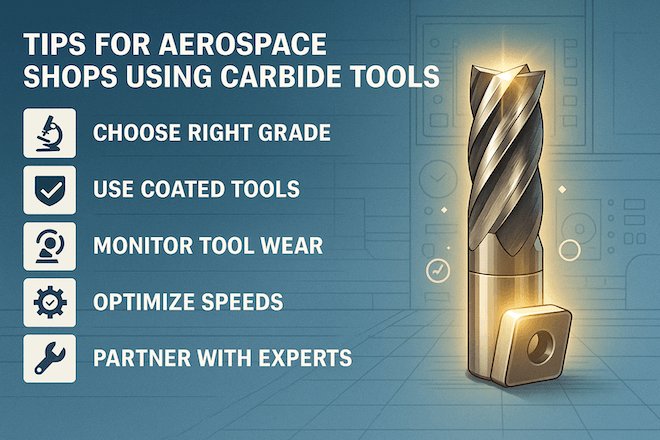
재료에 맞는 적절한 등급을 선택하세요(예: 티타늄의 경우 미세 입자)
더 긴 수명을 위해 코팅된 카바이드 공구(예: TiAlN 또는 다이아몬드 코팅)를 사용하십시오.
스마트 센서 또는 IoT 시스템을 사용하여 도구 마모 모니터링
공구 파손을 방지하기 위해 올바른 이송 및 속도를 적용하세요.
기술 지원 및 맞춤화를 위해 신뢰할 수 있는 공급업체와 협력하세요
Retop과 협력하세요: 항공우주 초경 공구 파트너
Retop은 14년 이상의 고품질 텅스텐 카바이드 절삭 공구 생산 경험을 보유하고 있습니다. 다음과 같은 서비스를 통해 항공우주 산업을 지원합니다.
정밀 카바이드 인서트
맞춤형 절삭 공구
항공우주 소재용 고급 코팅
기술 지원 및 도구 선택 안내
글로벌 고객을 위한 빠른 배송
👉 자세히 알아보기 www.retopz.com
우리는 전 세계 항공우주 고객과 협력하여 도구 수명, 부품 정확도, 가공 효율성을 개선할 수 있도록 지원합니다.
결론
항공우주 부품 가공에는 오류가 용납될 수 없습니다. 모든 절삭은 깨끗해야 하고, 모든 부품은 정밀해야 하며, 모든 공구는 성능이 뛰어나야 합니다. 이것이 바로 더 많은 기업들이 앞서 나가기 위해 텅스텐 카바이드 절삭 공구를 선택하는 이유입니다.
티타늄 팬 블레이드나 구조용 알루미늄 부품을 가공하는 경우, 카바이드 공구는 작업에 필요한 강도, 속도, 안정성을 제공합니다.
항공우주 제조에서 비용을 절감하고, 생산량을 늘리고, 최고 수준의 품질을 유지하고자 한다면 Retop과 같은 신뢰할 수 있는 파트너가 제공하는 텅스텐 카바이드 공구가 가장 좋은 선택입니다.

